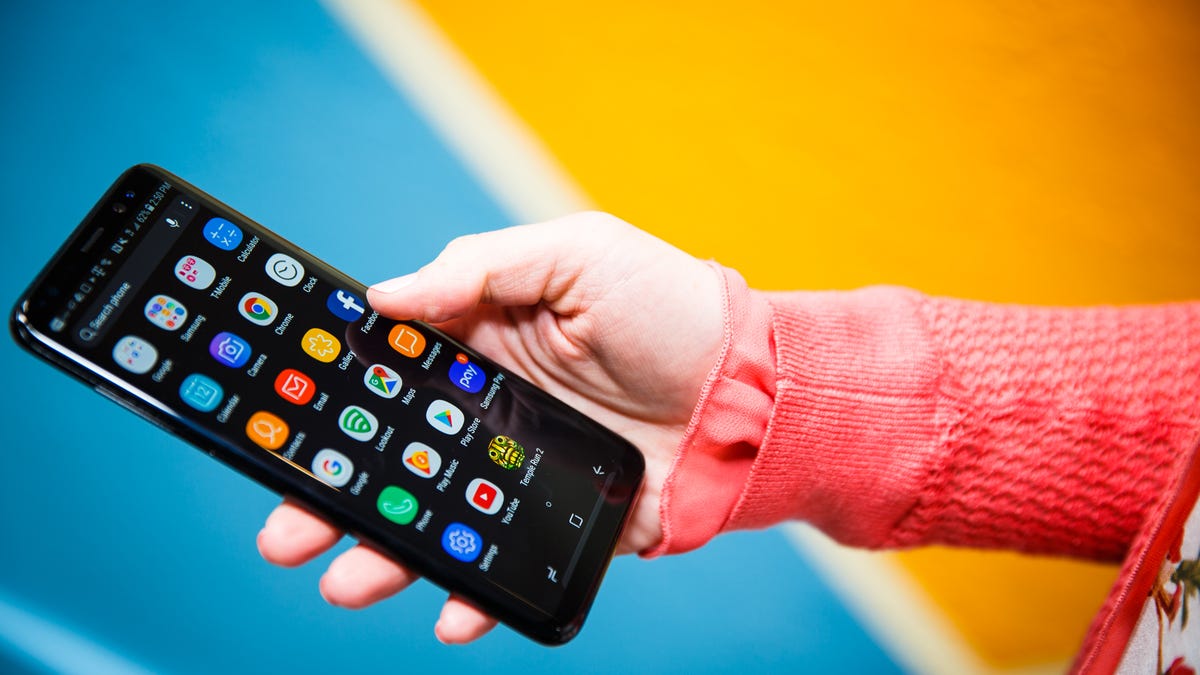Your future phone screen could touch you right back
Commentary: Device screens that roll, fold, feel like fabric and let you peer right through them are turning passive displays into active tech -- and it's really, really cool.

What if, instead of touching your phone, tablet or TV and feeling glass, you felt fur?
"Touch is the one sense you can't turn off," said Greg Topel, the CEO of Tanvas, a company working to make glass feel like cotton, paper or anything other than glass. "That's what we've been doing in the digital world. We've been touching and typing away on lifeless glass."
Click for more stories.
Things won't stay that way forever. Companies like Tanvas are working to turn the passive electronic panel into something far more active that you can bend, fold, peer through, write all over and even stroke to feel silk or grass. And that's really freaking cool.
Imagine the possibilities. We can already interact with screens by touching them, but having our touch change the way that screens feel, and even what they do, opens up all kinds of possibilities I can barely begin to imagine.
Unless you have an iPhone or Apple Watch that vibrates when you press it with some force, our relationships with the devices we use all day, every day can feel pretty damn one-way.
The kind of products and prototypes out this year could help catapult our screens to the next level. Here's what's around the bend.
The touchy-feely tablet
Stroke your hand over Tanvas' demo tablet for the sensation of rough cobblestone beneath your fingertips. Do it again and you might feel silk.
What you're actually sensing is an advanced form of haptic feedback, similar to that buzz you might feel on your phone when you type. And it can mimic everything from the flip of a toggle switch to the texture of denim jeans.
Not sure what the texture of those slacks are? Give the screen a swipe.
The technology doesn't use vibration and the glass doesn't move. Instead, Tanvas builds off what we have today. When you put your finger on the screen, the electrodes that ordinarily live in the display will pump more energy into the spot you touch for a few milliseconds -- about 120 to 130 volts rather than the usual 5 or so volts, Tanvas' CEO, Topel, said.
There isn't any energy going through your body, Topel noted. It's more like touching a statically charged balloon to your face. By combining recipes of wavelengths in certain ways, Tanvas can make turning a page in your ebook feel closer to actually flipping a paper page.
We'll likely see Tanvas' work first in display units, like at a museum exhibit.
The super cool touchscreen fridge
LG 's Smart InstaView refrigerator, which is slated to arrive "soon", gets points for originality. It comes with a 29-inch digital display that lets you browse the web, play music, write post-it notes... and something more.
Rap on it twice to turn the 29-inch touch panel into a semi-transparent window that lets you gaze into your fridge without opening the door.
In truth, it may be more reliable to use the fridge's built-in panorama camera to inventory your eggs rather than knocking on the screen. But then again, if you're standing in front of the fridge and want a quick reminder of what's in there, the see-through screen will be a handy way to get it.
The TV screen that's really a speaker
Ready to have your mind blown? This Sony OLED TV doesn't have a speaker. It's screen is the speaker.
It has four transducers on the back that vibrate the TV's screen, which makes sound emanate from the screen itself. So when actors speak, their voice comes from their mouth, rather than speakers on the side or back, or a separate sound bar.
There is, however, a separate woofer on the back of the TV to handle bass. And from what we've seen, the screen's slight vibration has no effect on the picture quality -- which looked spectacular during our time with it.
We haven't had a chance to fully test it yet, but this sounds pretty ingenious.
The rollable phone and foldable tablet
Lenovo's bendy CPlus concept phone bends the meaning of "screen".
We've tried on Lenovo's prototype of a phone that conveniently rolls around your wrist like a watch, and seen its tablet that you can fold to more easily carry around. We've also seen Samsung's patent filings for a foldable tablet, which could come as early as later this year, but is also rumored to have slipped to 2019.
Phone and tablet screens that bend and fold are far closer to reality than to the wild fantasy of years past, but there are still dangling questions about how much we really need them, and if their unconventional shapes will justify the inevitable extra expense.
The first bendable or foldable models are expected to be costly and rare, and it's possible they'll suffer from hardware trade-offs -- say a plastic display cover instead of glass, or a less efficient battery -- in order to make the designs work.
The future of screens is smarter, touch-ier
The message in the tea leaves reads loud and clear: The screens that surround us in our phones, tablets, TVs, fridges and smart speakers are going to become even more powerful and capable than ever. And with Apple's touch-sensitive screens and that LG InstaView refrigerator, our passive-screen status quo has already begun to change.
Some experiments may not work, and others will morph and lead to better gadgets that will make info-gathering, communication and entertainment that much richer.
My additional hope? That by the time all our kids and grandkids take this kind of vibrating, sensing, moving screen for granted, some smart soul will have figured out a way to automatically dissolve finger grime, which would make these remarkable screens self-cleaning, too.

